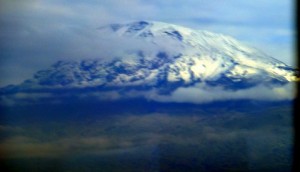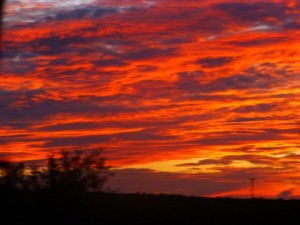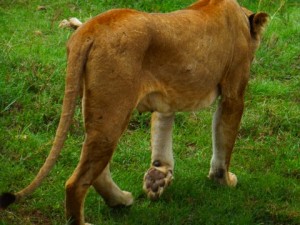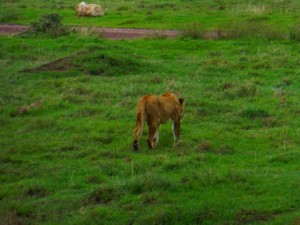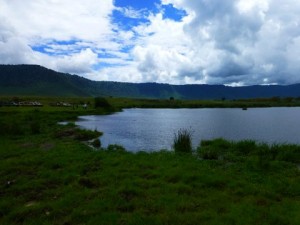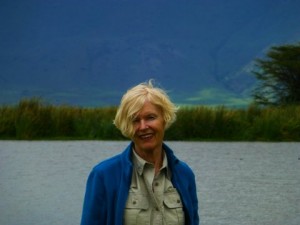Hello: If this is the first time you have come to my blog on my trip to Tanzania, you might find it more enjoyable if you scrolled down to the bottom of the blogs. That way you will read the material (and/or just look at the photos) in the time sequence in which the trip occurred. Just a thought.
The primary reason for my trip to Tanzania was to attend the wedding of Martin and Grace Maliyamkono. I met Martin several years ago when he was a student in one of my classes. He and some members of his family became good friends. He returned to Dar es Salaam four years ago where met the lady of his life. The family invited me to the wedding.
___________________________________________
We had no idea how spectacular this day was going to be. Our experience, yesterday, in the Manyara Lake National Park was so exciting, we couldn’t imagine how it could be bettered. And, in way, it wasbecause the first day of being introduced to so many beautiful animals in a natural pristine environment was both heart opening and spectacular.
However, the Ngorongoro Crater itself is so dramatic that the collection of amazing animals and Crater match each other’s intensity. We were up at 5 am. Our hotel gave us breakfast at 5:30 am and had a box lunch ready for us. We set off in our jeep. The early morning in Karartu (altitude approximately 5,000 ft) began with this amazing sunrise.
The road continued to climb up the outside of the Crater. The journey to the entrance was a brief twenty minutes.
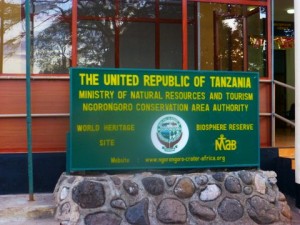
There were several jeeps already at the gates to national park that surounds the Crater. Frustratingly, it took the park officials 3/4 of an hour to process us before we could gain entrance to the Park. Baboons were everywhere. They are not shy. We were told to make sure we kept the jeep doors closed. They love to go after food.
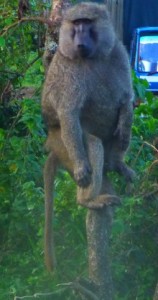
A bit about the Ngorongoro Crater. Per Wickipedia it is a large, unbroken, unflooded volcanic cauldron discovered in the late 19th Century. It was formed when a giant volcano exploded and collapsed on itself some two to three million years ago. The crater is 2,000 ft deep and its floor covers 100 sq mi. There is an estimated 25,000 animals within the crater. All of this is quite daunting.

Finally we are ready to take off. The road becomes dirt again, but not filled with pot holes. We have the top of the jeep up so we can stand, not wanting to miss anything. I would guess, at this point we are 6,000 feet up. We turn a corner and the crater is revealed. I was astonished at how expansive it is. The varieties or greens and blues wove gently into one another. Yes, and inside is another alkaline lake.
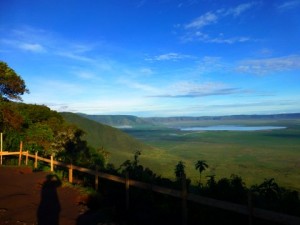
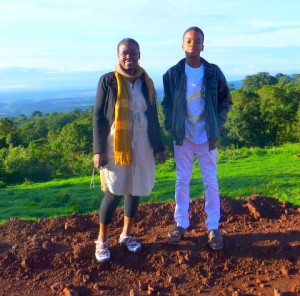
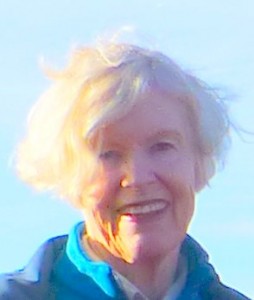
We continued. I was fascinated by these trees, their shape is very much like the Monterey Pine Trees that populate the Carmel and Monterey areas in California.
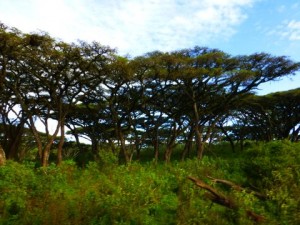
I asked Chester, our guide, if I could get out and take more pictures. No, he said empatically. There are lions about. Sure enough. Look what happened, not two minutes later!
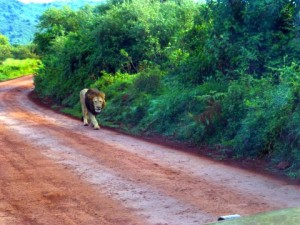
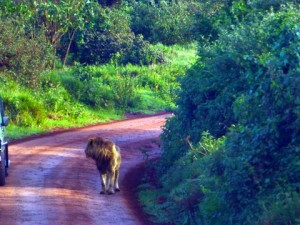

Our day has certainly begun and we haven’t reached the floor of the crater, yet. In fact, we are just beginning to weave our way down.

The first animals we pass are zebras.

I suddenly realized how horse-like a zebra is.

These beautiful beings are less than a block away from us. In the distance are herds of buffalos.

I was fascinated by the light in the crater. As you can see in the picture above only part of this vast space has been illuminated by the sun. This contrast continued throughout the day. The areas enjoying a direct hit from the sun gave us lots of light to view the terrain and the various species of animals. The hills often remained very dark and mysterious.
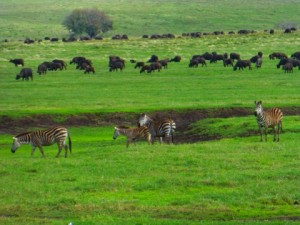
Co-exist until one or other needs to eat. Hmmm. It is a metaphor for humans, I thought. Fortunately, we don’t eat one another, but we do battle for a point of view! I guess you could say that the animals battle for food, for existence. We, humans, really, are battling to satisfy our ego’s needs. Maybe our challenge is to grow beyond this individual and/or group selfishness. When I experienced the peace in this Crater, I sensed a message to us humans.
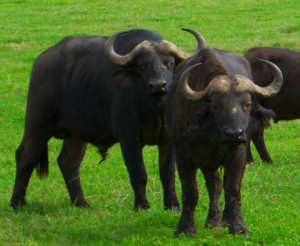

Suddenly, we came upon a flock of birds. They moved very quickly but I caught this photo.
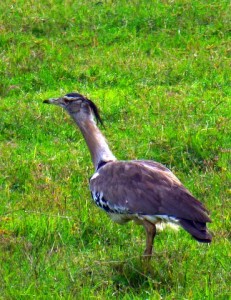


And, then disappears.
We had been told previously that sometimes the herds of animal migrate from one side of the crater to the other. Well, to our amazement this happened with the buffalos. (A reminder, when you see blue background, it’s because there is no sun on that area – which is one of the qualities that makes being in the crater so extraordinary.)
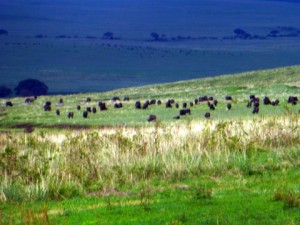

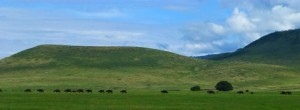
We decided this must be happening because the scawny lion was a threat.
Oh no, we think we are incorrect. For to our left is a hyena somewhat hidden in the ground. See you he eyes us.
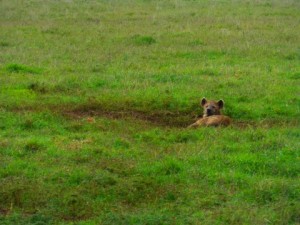

We continued our journey.

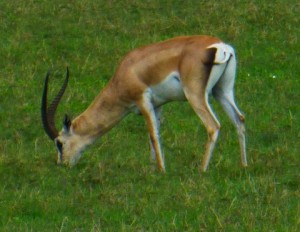

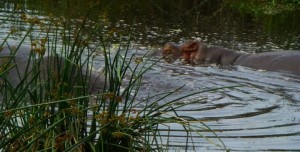

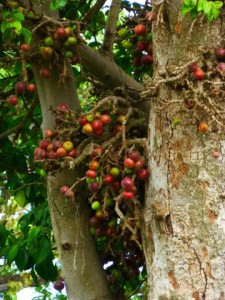
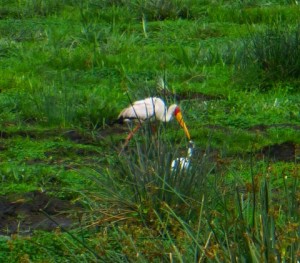
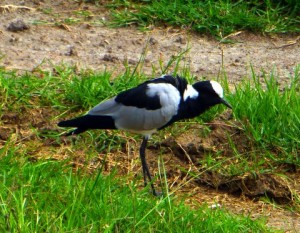


Another bird says hello.

And another bird.
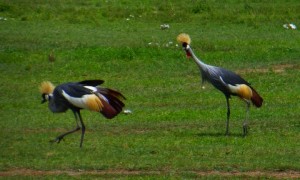

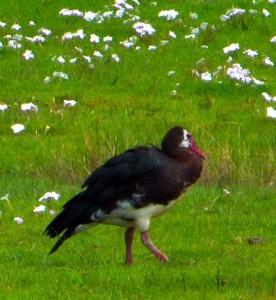



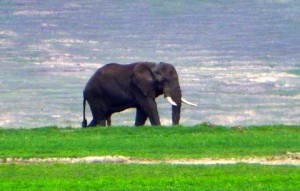

I keep being amazed at the fact that every turn our safari jeep takes we see another species. Next up?
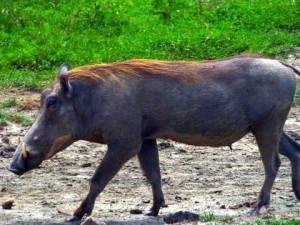
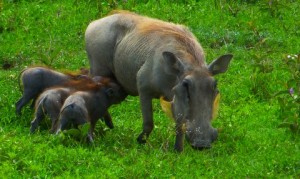

All our attention has been to the left. Suddenly Kaashu said: Look to the right. There before us were a herd of cows. Rube and I were astonished. Chester said these belong to the Masai Warriors. They are allowed to bring their cattle into the Crater each day to drink the water from the alkaline lake. They, must however, be out of the Crater by 6 pm.



At this point a leader of another safari in a similar style jeep drove by reporting he had received a message that a hyena was attacking a baby buffalo. Chester asked: Do you want to go and watch? Rube and I said an emphatic no. Kaashu said yes. The ladies prevailed.
I have become intrigued with zebras. So, I am adding another photo of them.
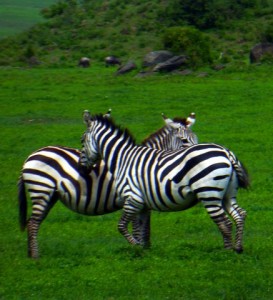
As we move into fertile land ostriches begin to play part.
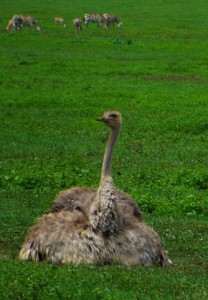

Now that we are far away from where we entered the Crater – the other side. It is becoming easier to see the terrain of the cliffs of the Crater.
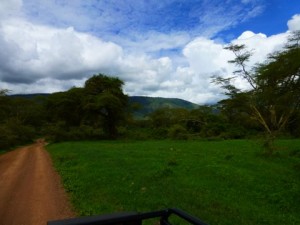

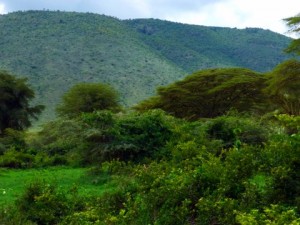
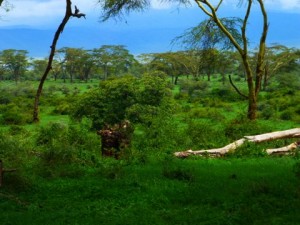
At first I thought that dark brown mound was an animal. Nope, it’s a stack of wood!
Two ostriches came into view – playing the dating game, we surmised.

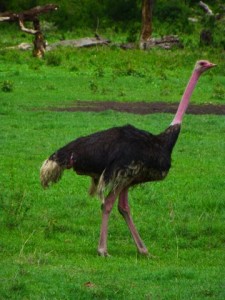
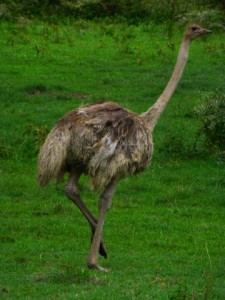
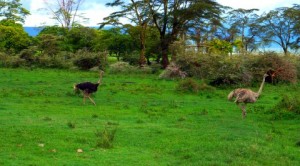

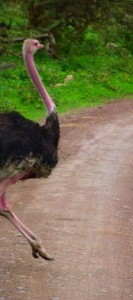

Another bird appears.
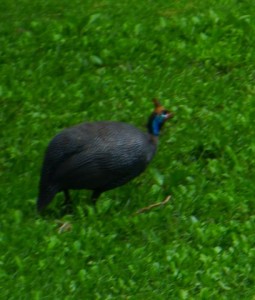
We are beginning the end of our journey in the Crater. Stopping for lunch on the edge of the alkaline lake we are admonished to eat inside the jeep. There are scavenger birds that dive at people eating food. We paid attention. However, others did not and we watched these scavengers become very aggessive. Needless to say the picnicers soon retreated to their jeep.
We got out to stretch our legs hoping we might see a rhinocerous in the lake. We saw a bit of the water ripple but not the animal. Oh well, we have had an extraordinary day.


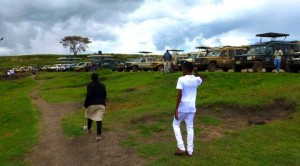
The end of our time in the Crater has come. We have a four hour drive now back to Arusha. We are all surfeited with images and experiences. How lucky we have been!
After our journey back to Arusha and dinner at the Kitine’s Mrs. Kitine presented me with a Masai Warrior cape. That was a very kind gesture.
Then she, her husband and children, Rube and I sat about and chatted. It was a fun family evening.
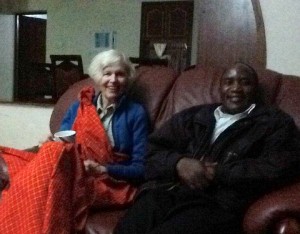
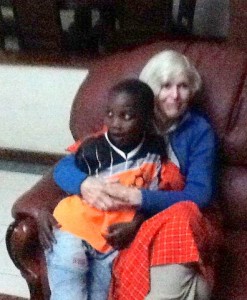
We left Arusha at 7am the next morning. And, wonderfully the mist, fog and rain had lifted. From the bus I was able to grab a couple of photos of Mt. Kilimanarjo. It’s huge, speads a long distance (wide) and was covered in glistening snow.

